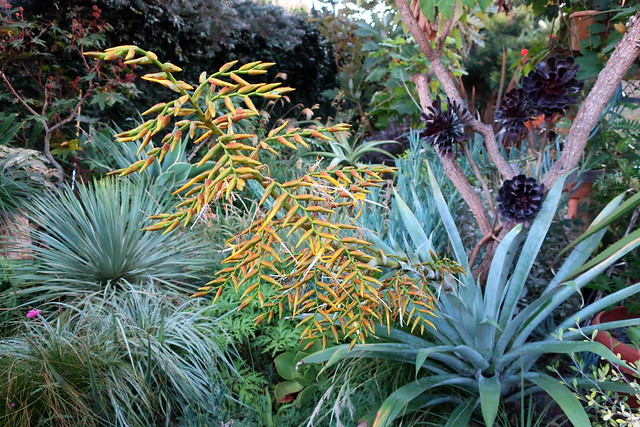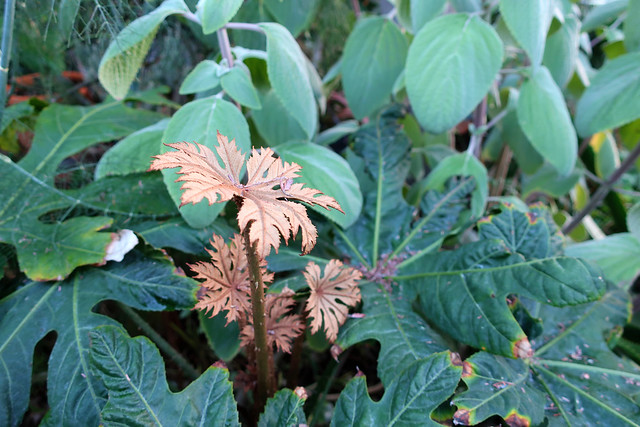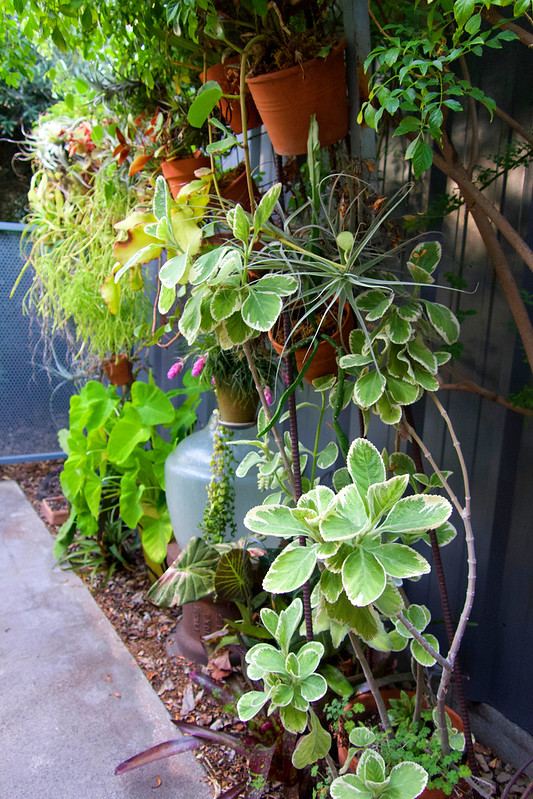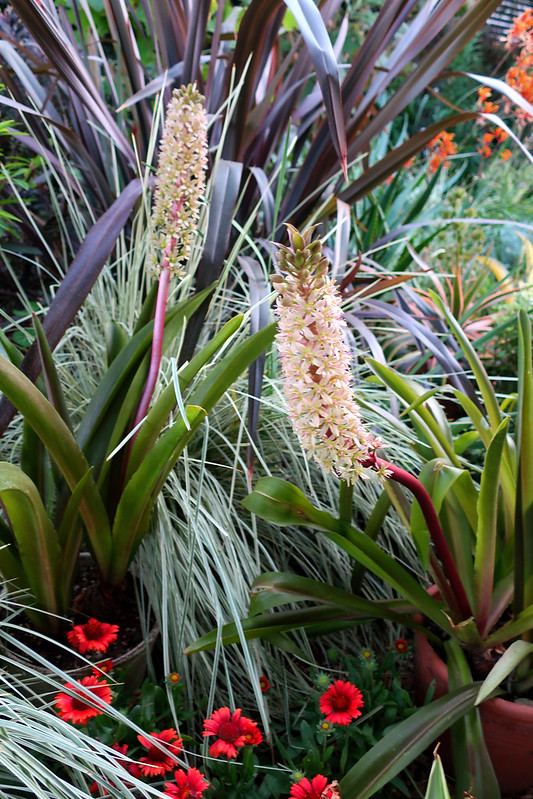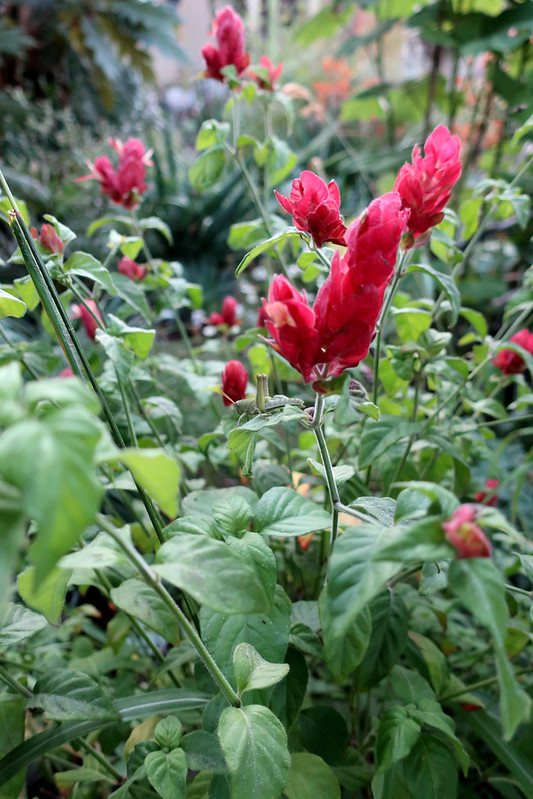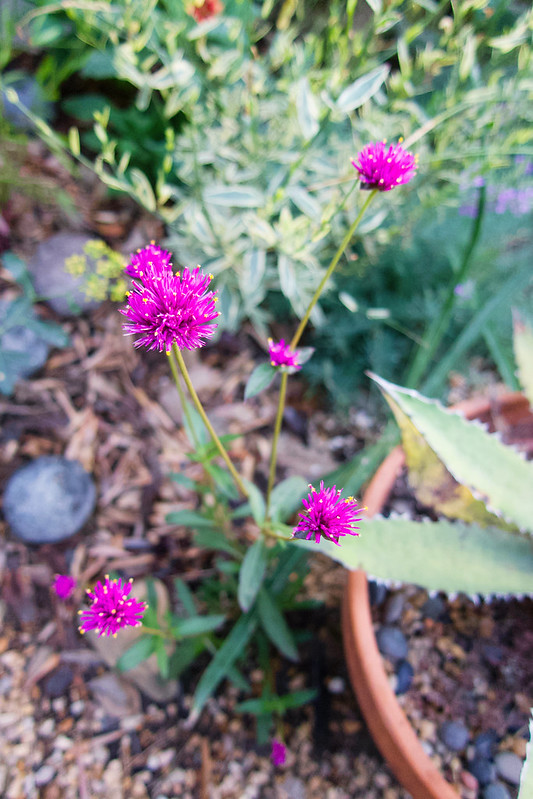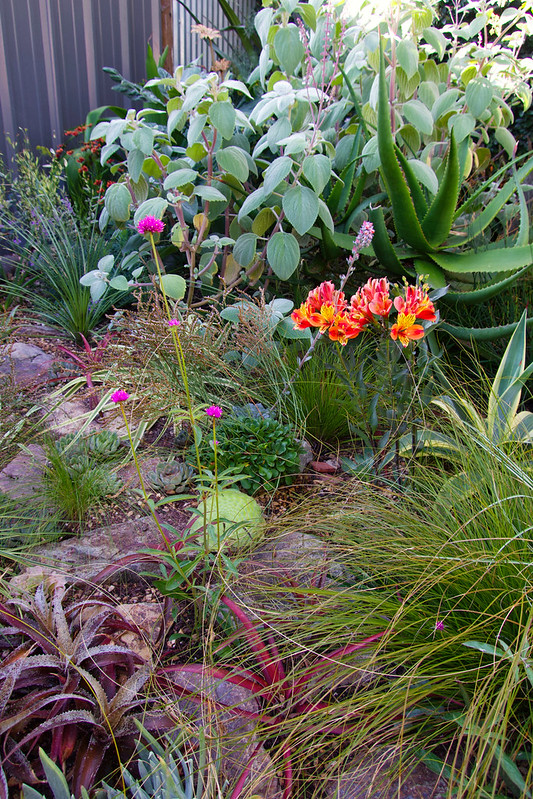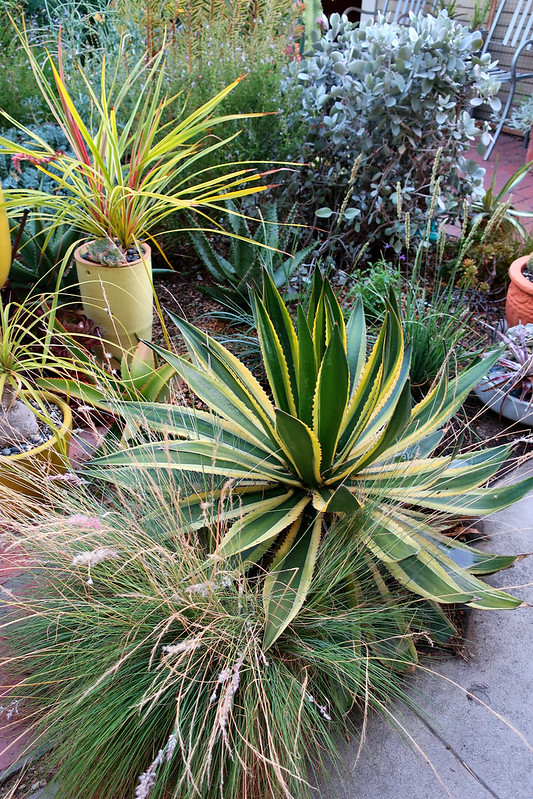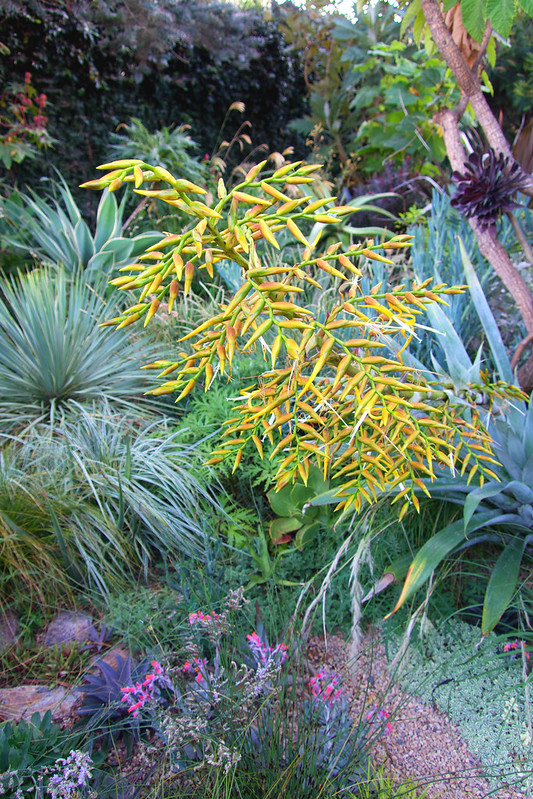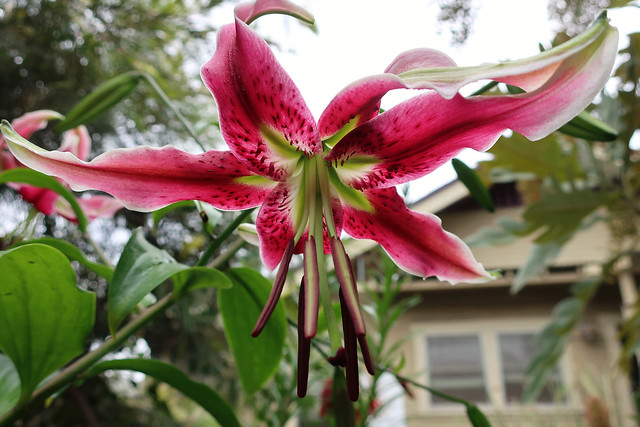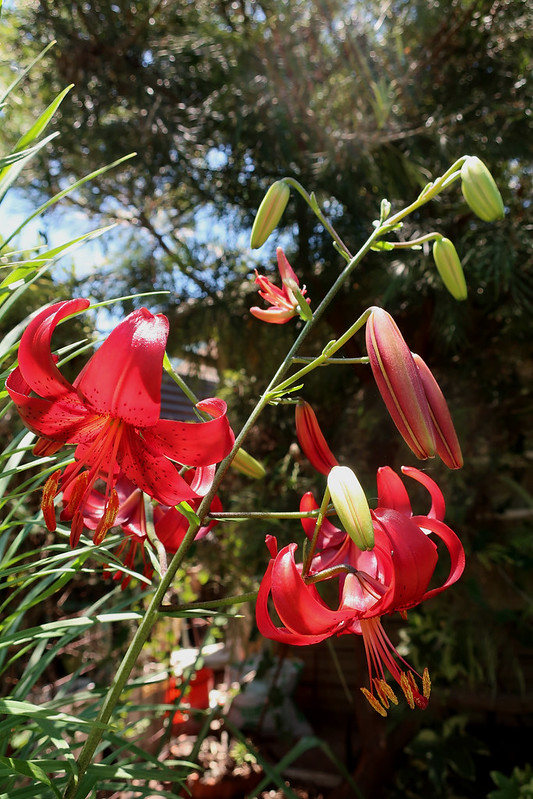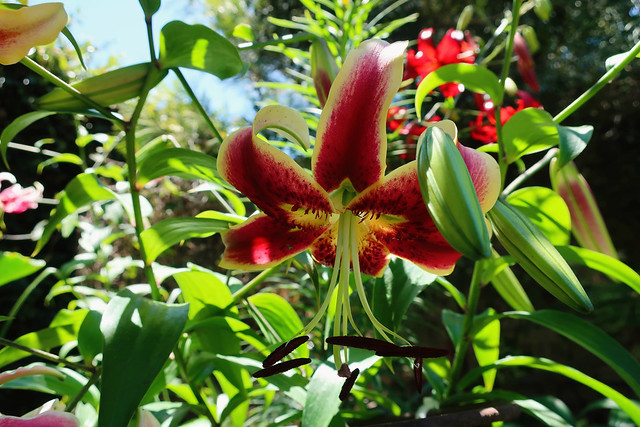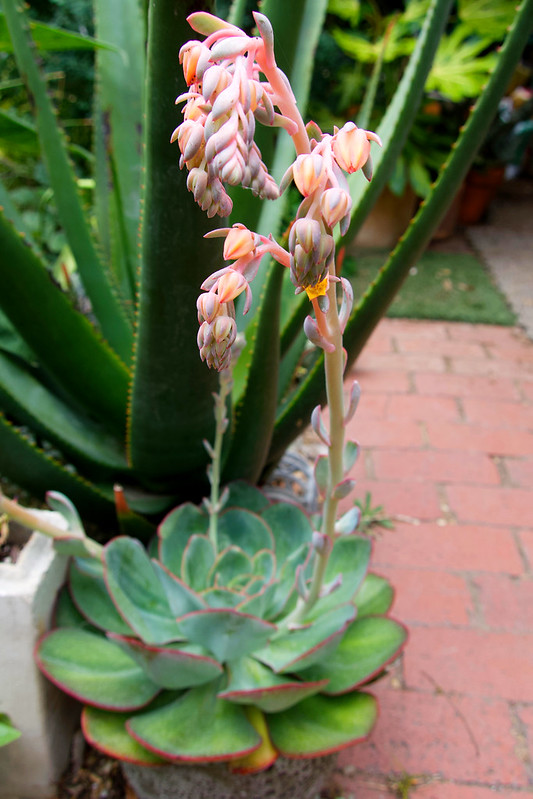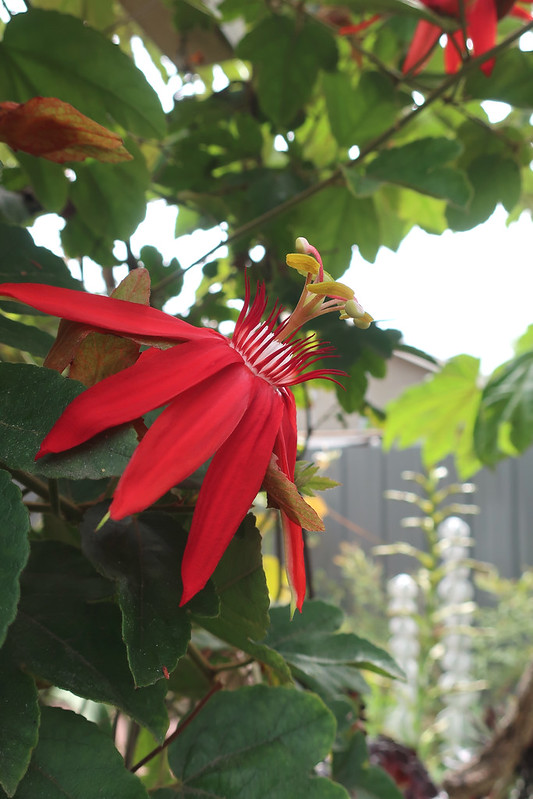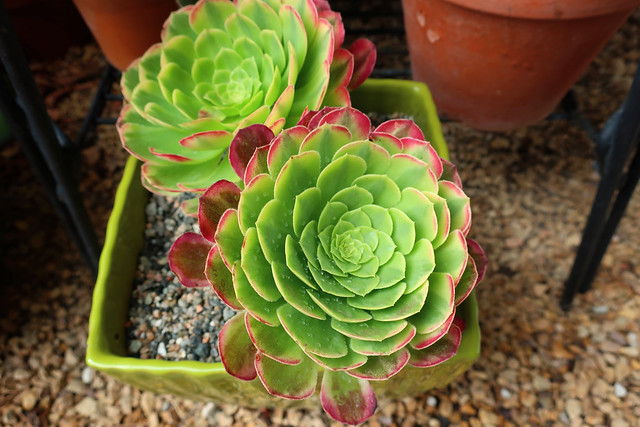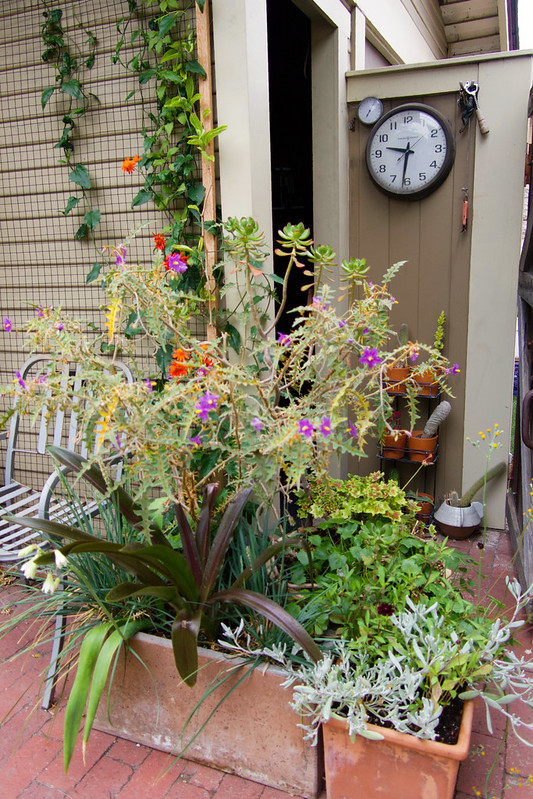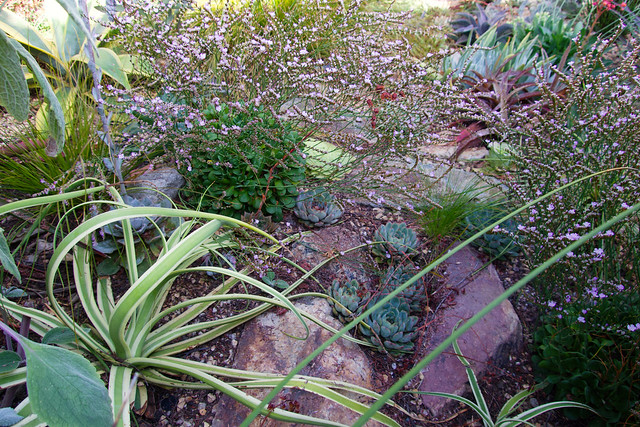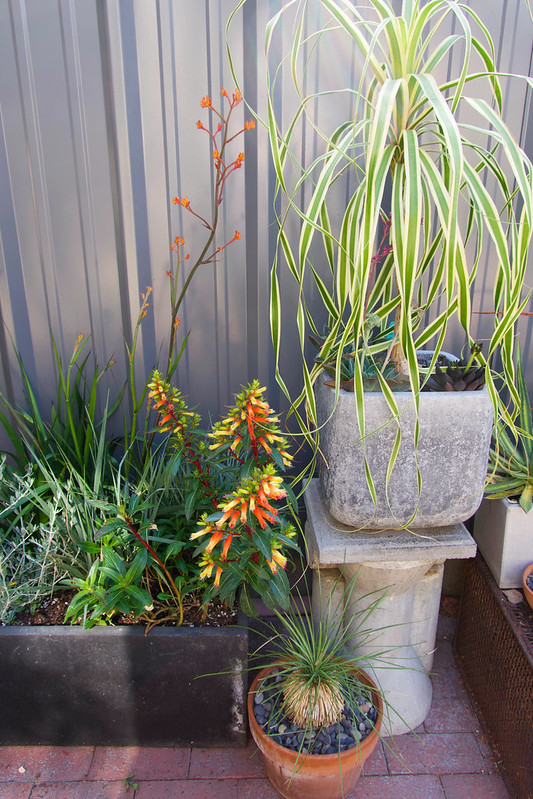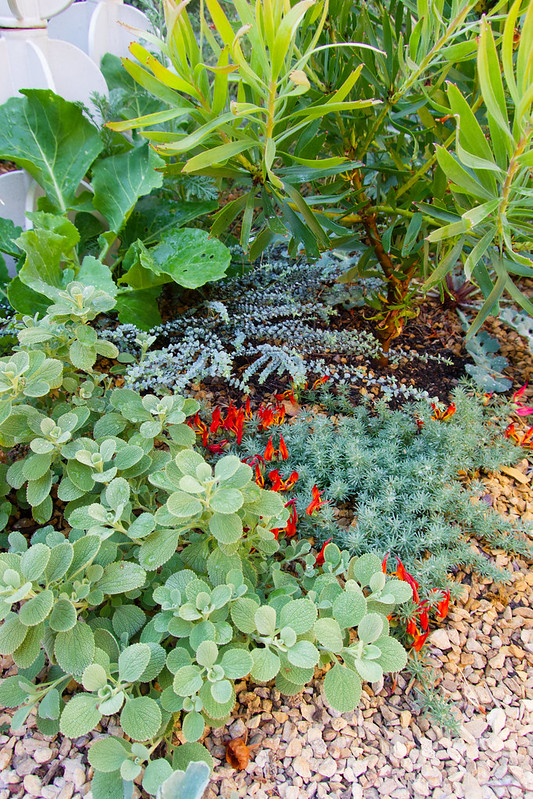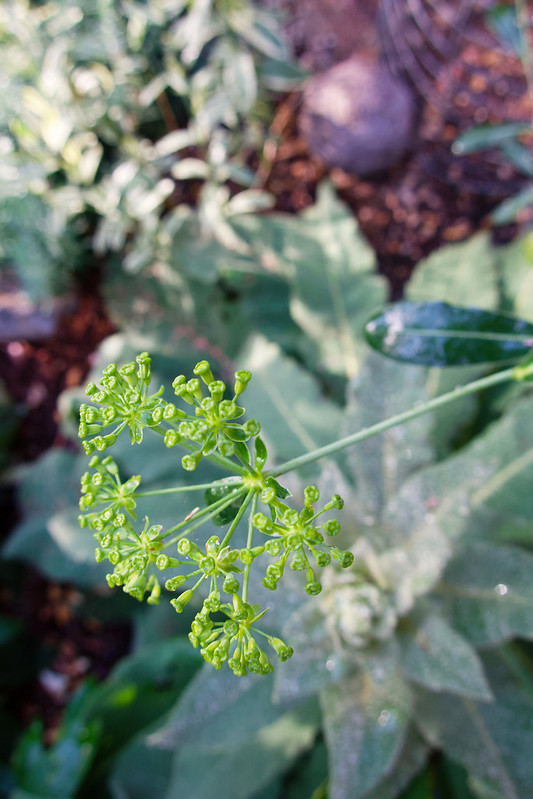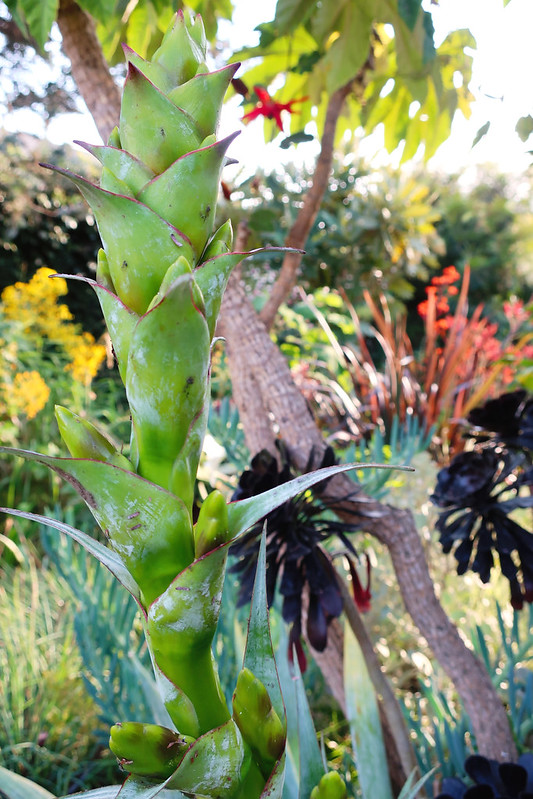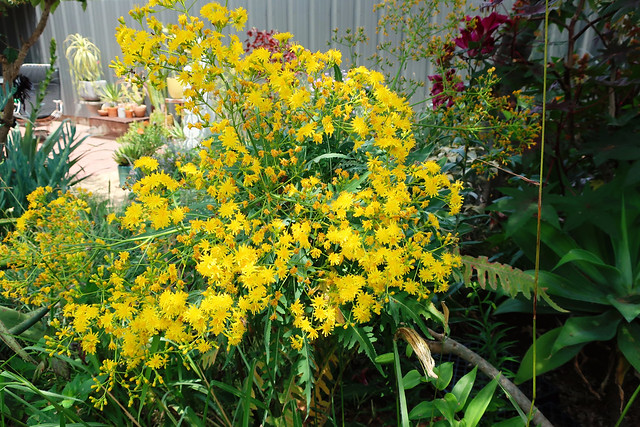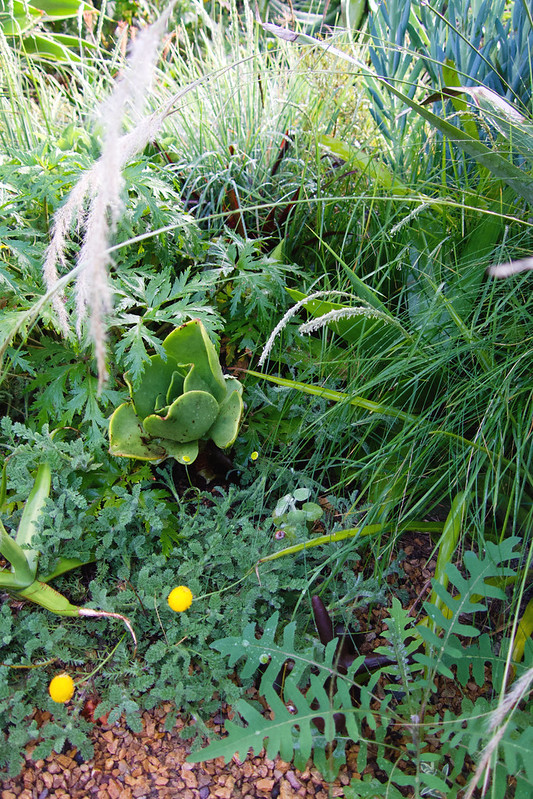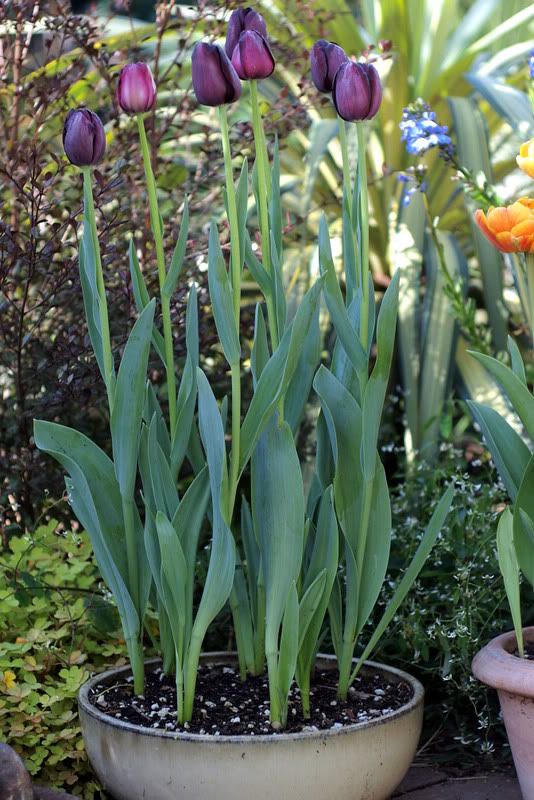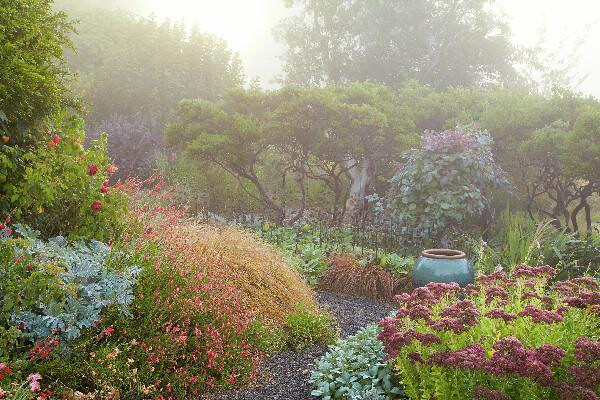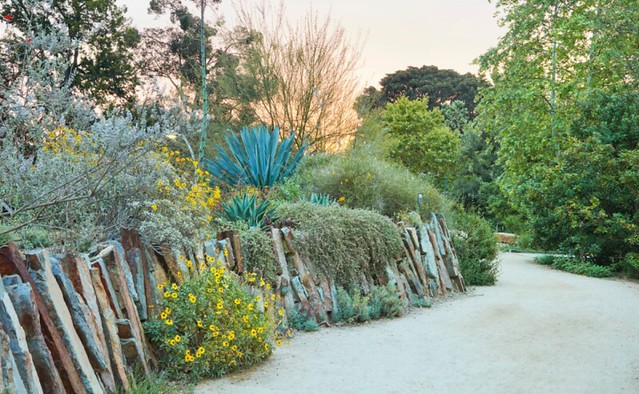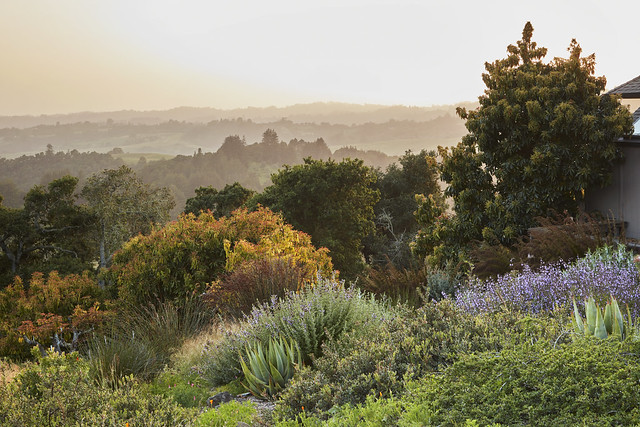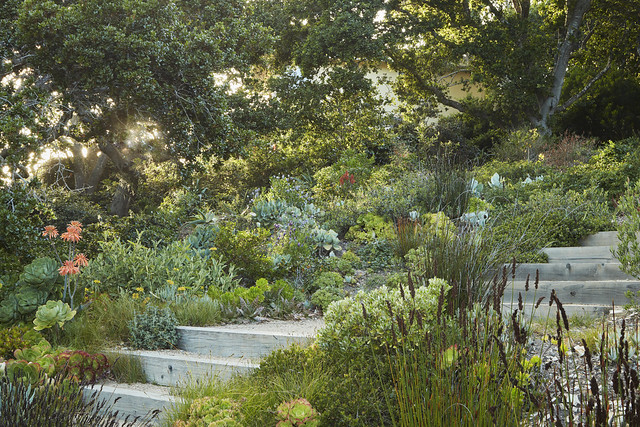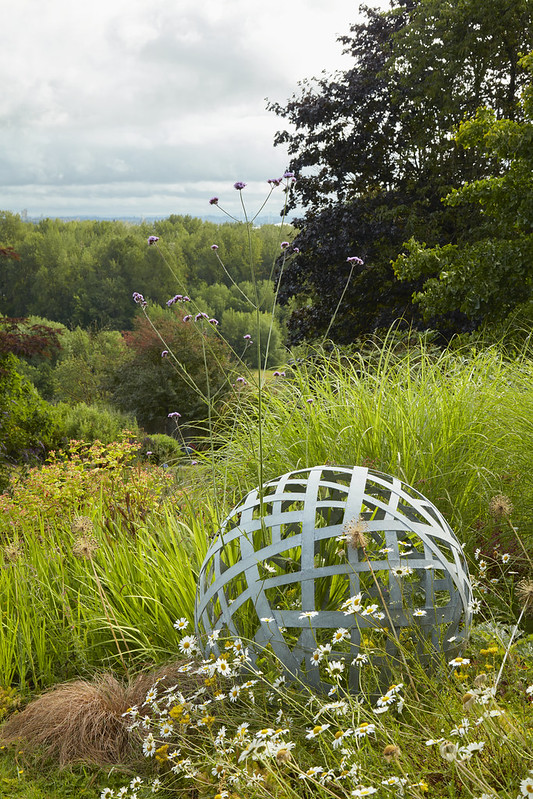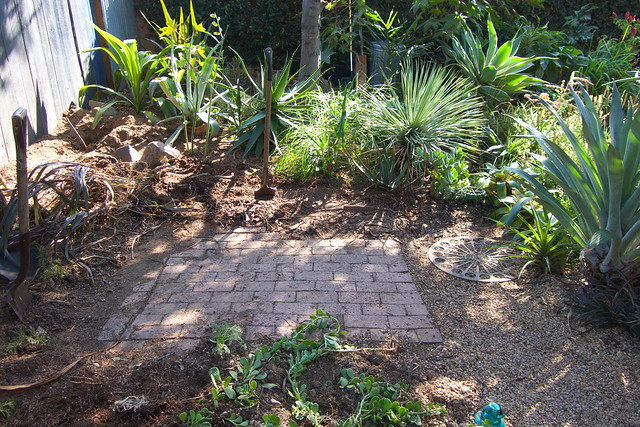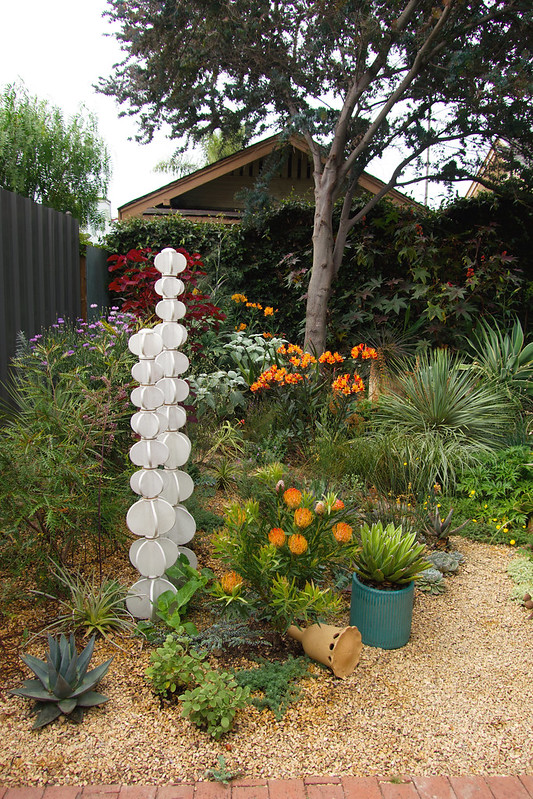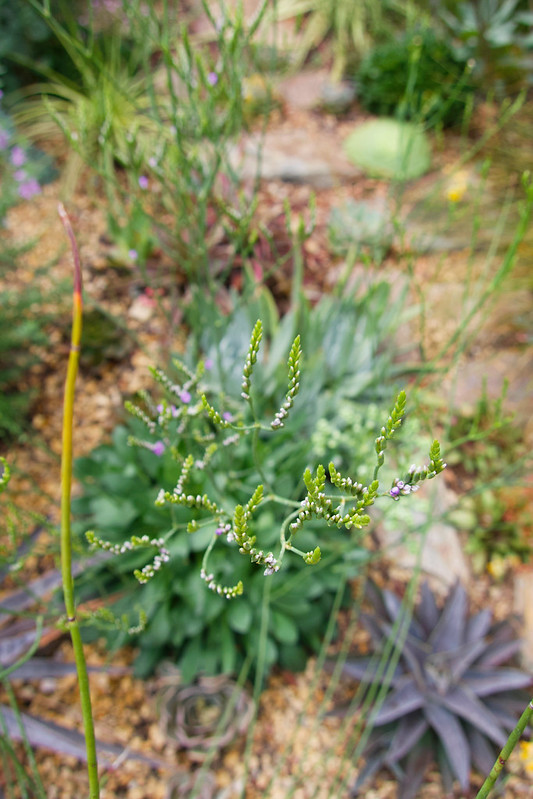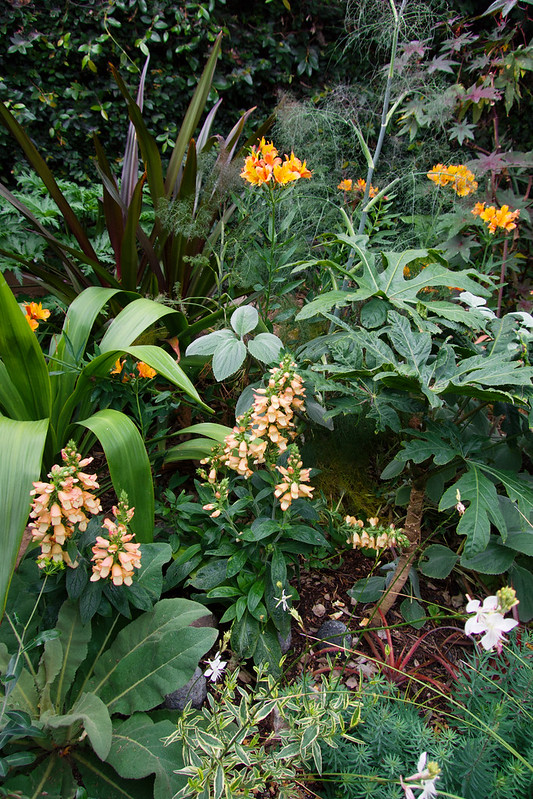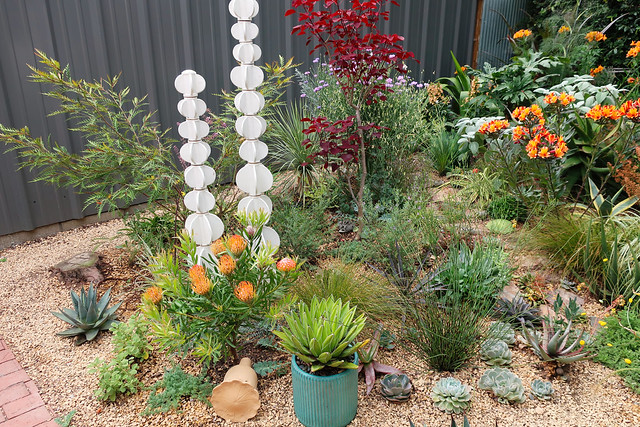We have a new member of the family, so of course I had to immediately become acquainted with little Hannah, who resides in a foggy coastal Oregon town. And even though she’s only days’ old, I began deliberating before leaving, What shall she call me? Nana? Mimi? Grandmothers in our family style themselves with the French word for grandmother, Memere, but my mom seemed to so thoroughly own that title that it feels inappropriate somehow to take it on. After meeting little Hannah, I’ve decided she can call me anything she wants — just please call me! Anytime, anywhere…
As well as helping friends pack and move house, Marty handled the garden and Billie while I was away and seemed overwhelmingly pleased to have me home to take over garden responsibilities again. I didn’t make it easy for him, leaving lots of new plants needing extra attention while they settle in, next to succulents that don’t want any water at all, etc…I still can’t get over what a phenomenal job he did at the hot end of July. I planted an Annie’s Annuals order a day or two before I left — what was I thinking? — and not a single plant was lost. Bravo, Marty! (And sorry I’m such a PIA.)
Between Marty’s dutiful attention to watering duties and the 90-degree heat, the garden is incredibly lush, with the trevesia in particular throwing some bronzy new leaves that look like they were cast in dyed concrete.
It’s always so much fun to prowl the garden after a few days away, when it has even more of a capacity to surprise. There were buds on this tillandsia when I left, but I was unprepared for this graceful performance. Possibly T. stricta — tell me if you disagree. I’m very lax with tillandsia names.
Pineapple lilies opened.
With the high temps, the tropicals exploded into growth and flower, like this shrimp plant.
A six-pack of Gomphrena ‘Fireworks’ was planted down the rock spine right before I left.
The gomphrena hasn’t made much size yet, but at least all six survived. The Carex testacea on the right is lush, happy, and reseeding along the rock spine. A Libertia chilensis was just squeezed into this area too, part of the Annie’s Annuals order.
This little coreopsis was a recent local find, ‘Hardy Jewel Desert Coral’ — not much info available on it other than the name implies it’s perennial and not an annual.
The sideritis and Verbena bonariensis were pretty much done, so they were both pulled — with high hopes for reseeding — and a couple Sesleria ‘Campo Azul’ I had potted in reserve were slipped in. (This sesleria, along with the sedge Carex testacea, have become the dominant grassy presence in the back garden.) Now Aloe marlothii can get a nice baking this August and redden up those spines.
And I took the opportunity to clean up some of the wandering pups of Agave lophantha ‘Quadricolor.’ I really need to pull that bloomed-out ruby grass as well — Melinus nerviglumis provides plenty of seedlings.
Back to that crazy bloom truss on the bromeliad. I’d been debating whether to stake it, and in a week’s time it’s become nearly parallel to the ground. I really need to make a staking decision or risk damaging the flowers. (I think the better approach might be to tie it with fishing line to the tetrapanax.) The individual flowers are lightly scented. I can find no information on if and how many pups will form, and whether they will be on the bloom spike or at the base. My Tillandsia secunda is incredibly prolific, continually throwing pups along the spike and at the base, and has been doing so since July last year! In bloom a full year, I noticed new flowers buds forming on it again just this morning, which means more pups will form along the stalk — very different from agaves. My White Agave, A. mitis var. albiodor, has finished blooming, and I’m desperately scanning the base for a single pup — I may have spotted one — whereas I’ve taken at least a dozen pups already from the tillandsia.
Hoping your gardens are also pleasing you this summer, whether nourishing your eye or stomach — or both!

